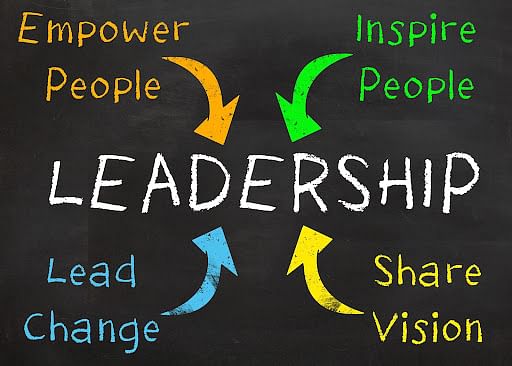Every great organization has great leaders at a variety of levels, and Lee Company is no exception. Every one of us at Lee Company – regardless of title or position on the organizational chart – has an opportunity to lead.
If you have spent some time thinking about the subject of leadership, you likely have a model (or models) you like. For this article, I thought I would share one of mine.
The model below has been described as the “George Washington model,” most recently by General James “Mad Dog” Mattis, former U.S. Secretary of Defense and one of the most revered Marines in American history. There are a number of paths to successful leadership, but for my money, a servant leader model that helped win the American Revolution (in spite of great odds) and established the standard for American statesmanship is one worth considering.
Four Lessons in Leadership
- Listen. “When you talk, you are only repeating what you already know – but when you listen, you may learn something new.” Good leaders are good listeners. And don’t confuse listening with simply waiting your turn to talk in a conversation. Good listening is about being present, letting the other person have the space to tell the whole story, and asking good questions.
- Next, Learn. Good leaders are exceptional learners. They don’t have all the answers and don’t pretend to – and they know every new problem or change in responsibility is an opportunity to combine three ingredients in a recipe for success: (1) the confidence in what they do know, (2) the humility to admit the things they don’t, and (3) the genuine excitement of being challenged to learn something new. Sometimes leaders feel like they need to have ready answers for every problem that shows up and not having them is a sign of weakness or ineffectiveness as a leader. Don’t make this mistake. It’s ok to say, “I don’t know,” as long as you follow with, “but I’ll find out.”
- Help. Having listened and spent some time learning, what is the true issue you need to help resolve? Once the true issue has been identified through listening and learning, your job as a leader, regardless of position or title, is taking action to help. But before you launch into what you think is a solution, first ask: What does help here really look like? Sometimes you need to fix the issue, but don’t be tempted to always think this is the solution. Most often, the real solution is that you give the people you’re dealing with the roadmap, tools, and encouragement to do it themselves.
- Lead. After going through the previous steps, leadership action can be many things – giving direction, establishing strategic goals, innovating old processes, managing personalities – but the endgame is using the information you learned and the help you provided to make those you serve better at what they do. That often means making other people look good while racking up victories.
When you’re using your talents and experience to put other people in a position to succeed, that’s leadership at its best.
The beauty of this model is its simplicity and durability. If you ever find yourself presented with an issue and you’re struggling, circle back to step one – get the right people in the room and start over with listening.
I hope you find this useful. Leadership is an art, not a science, and not one of us has perfected it. We all have to work at it every day.
Jason Hale, Vice President of Risk and General Counsel














